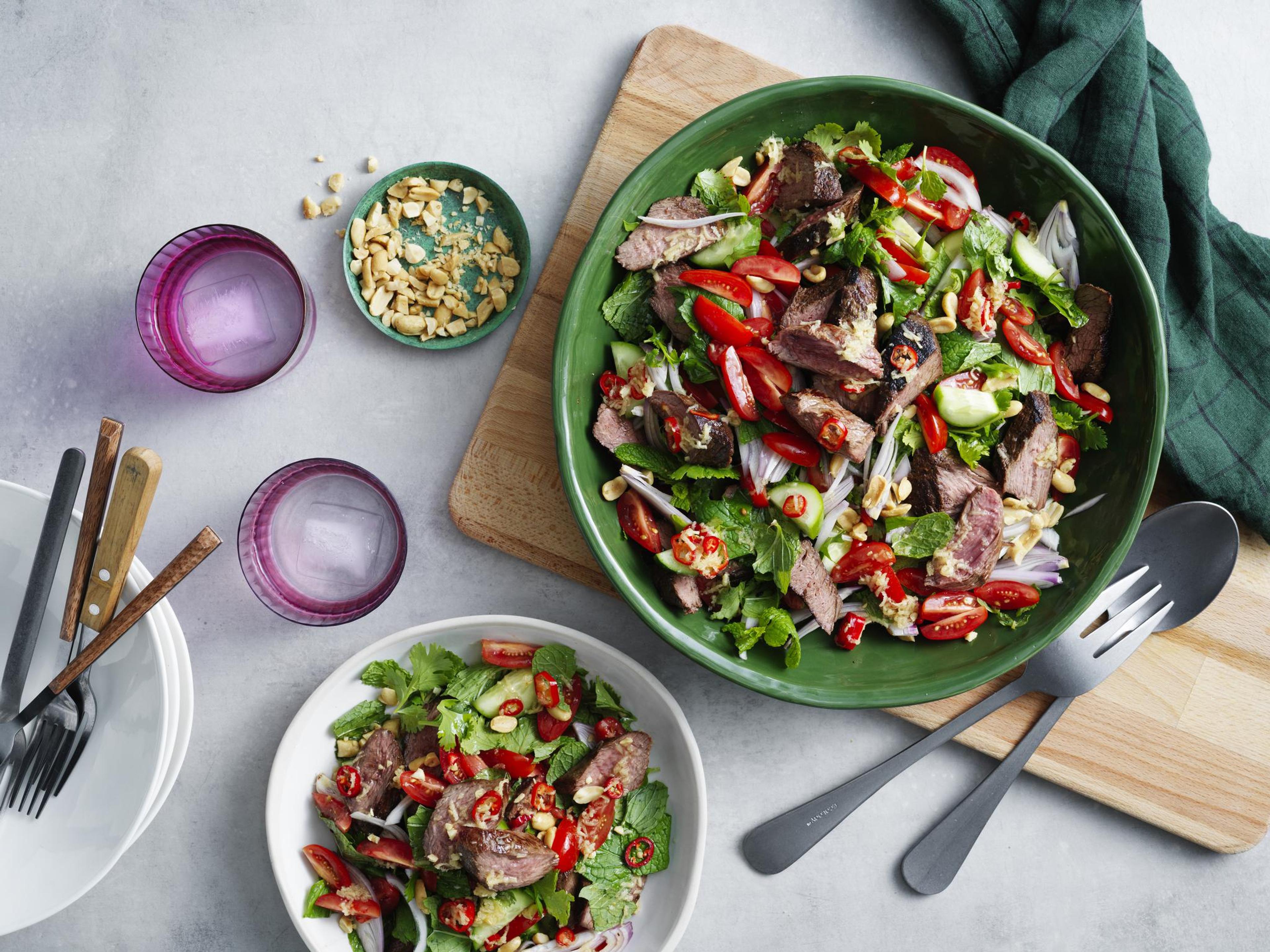
Maybe you’ve noticed we’ve been getting right into roo lately? We now have some super-nice recipes in rotation using this unique and incredibly delicious source of native protein. How lucky we are in Australia to have an abundant, sustainable, local and healthy meat that’s basically just bouncing from the back paddock to the barbecue.
At QuiteLike, we’ve come together with Paroo Premium Kangaroo to provide beautiful cuts for you to cook at home. This award-winning company works responsibly to conserve and maintain the environment and kangaroo populations, while plating up tender, open-range meat everyone (everyone that’s a meat-eater, anyway) will truly enjoy.
We are big believers that knowing where your food comes from is the first step to making good choices. So we’ve arranged a little sit down with Clayton Graham, the national sales manager for Paroo, to talk all things kangaroo.

How long has Paroo been plating up premium roo?
About eight years. Before we started, kangaroo was sold in frozen blocks and wasn’t that well-regarded. We saw a gap in the market, especially in the eastern states. It didn't take long for chefs and influencers to, pardon the pun, jump on board. It took about 18 months to come up with the brand, but after that, it took off really quickly.
What’s the story behind Paroo?
We wanted to find where the best kangaroo was in Australia. We tested, I reckon, 300–400 different combinations of regions and breeds of kangaroo. From that we discovered the best area you can get kangaroo from is the Paroo Darling region in New South Wales.
What makes the Paroo Darling region so perfect for kangaroos?
It has to do with the way the rivers flow and the way they are unregulated, which regenerates the area. Our meat became so popular that we realised we had to look at other regions that had similar attributes.

So, how does harvesting wild kangaroos actually work?
Our quota for kangaroo harvesting is set by the government. They do an aerial survey every year by plane with three scientists onboard who physically count the kangaroos. Then they use an algorithm, which takes into account the weather conditions and the historical weather conditions, also the predicted weather conditions, and the current numbers that are out there for previous years, then they come up with the total population of the kangaroos. The reason they do that is because there's too many kangaroos and they want to control the numbers, otherwise they have an impact on the environment and graziers. It’s all heavily regulated, but is more about conservation than it is about controlling numbers.

Why are there so many kangaroos?
Over a period of time, kangaroo populations were once controlled by predators. Dingoes or wild dogs would generally keep the population in check, but through farming and fences, it's meant that kangaroos have become overpopulated and they disturb the land.
What makes kangaroo so sustainable?
It’s a natural resource that is healthy and tasty and is helping the environment as well. Every kangaroo we take means that someone's not eating a piece of beef, which means they're helping the environment because kangaroos emit next to no methane, whereas cattle produce 1.67 tons of CO2 every year. Also, our population of kangaroos is able to regenerate quite quickly. Paroo has won an innovation award in delicious. magazine, and last year, Paroo also won the sustainability award. So kangaroo has come a long way, it's got a life of its own.
What makes kangaroo a premium meat?
Well, the first thing is the health benefits. It’s a product that's untouched, it’s natural, we call it an ‘open range’ product. There's no intervention at all from any transport or antibiotics or anything like that, it's a pure, natural product. And just given the nature of kangaroo itself, it is a very healthy and lean meat with less than 2% fat.

For someone who has never tried kangaroo, how would you describe the flavour?
What you’re tasting is a really pure meat product. It's has a tender texture and clean mouthfeel with a meaty, savoury taste. Depending on what the kangaroos feed on, you can sometimes get salty tones, even sweet tones, if they're feeding on pepperberries. It’s probably a bit like yearling beef or a young venison. But it's really that leanness and nice, clean mouthfeel that I think people enjoy.
How are people cooking with kangaroo at home?
We've developed products people are familiar with such as a burger, a sausage, a stir-fry, diced meat and mince. People are able to interchange other proteins with Paroo for taco Tuesday or to make spaghetti Bolognese and to throw on the barbecue. Because chefs are confident using it and giving people a great experience when they dine out, people are now more open to purchasing it and cooking it themselves.

